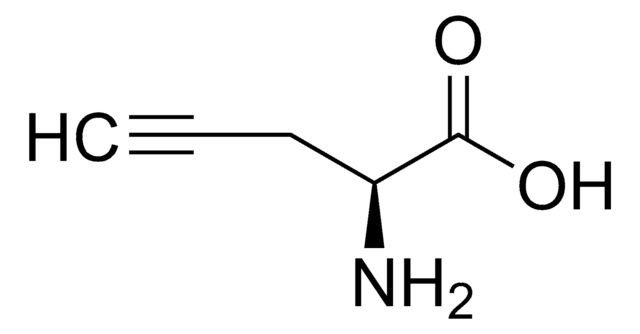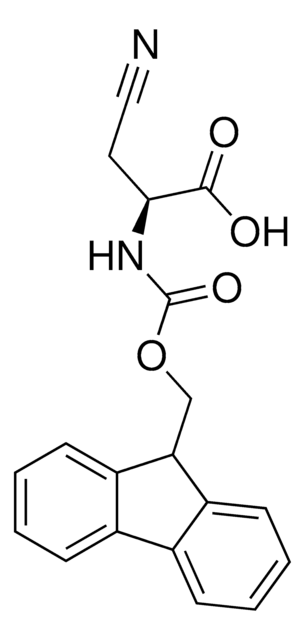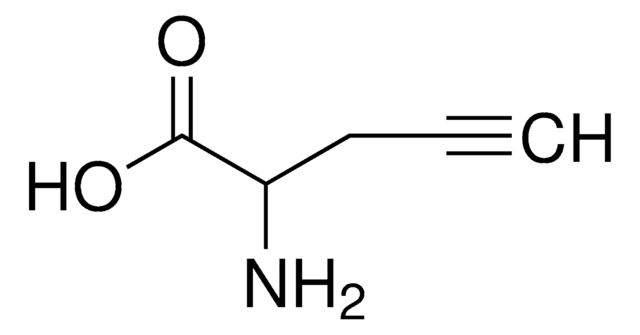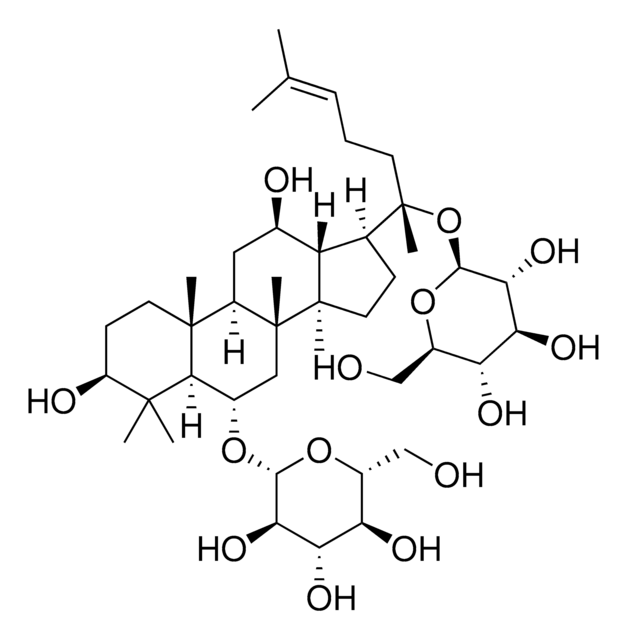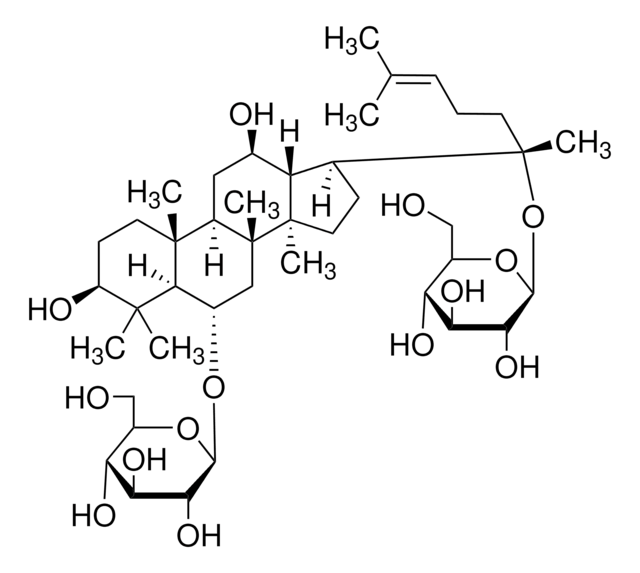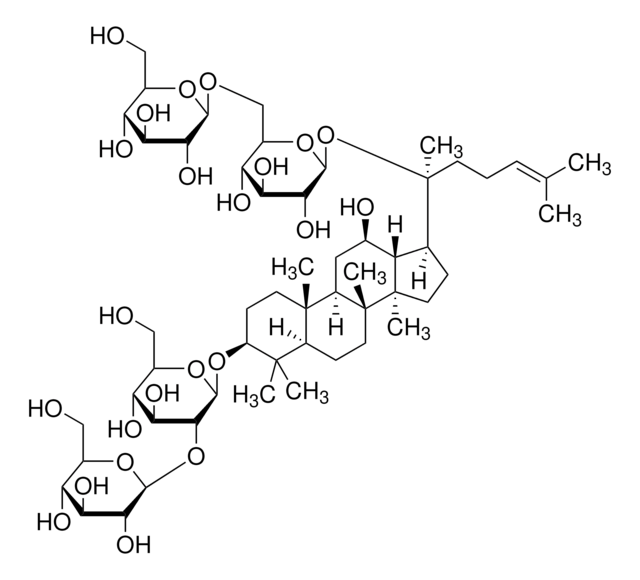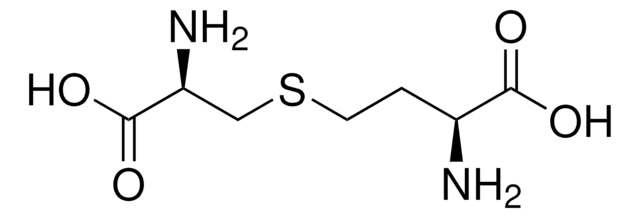C9650
β-Cyano-L-alanine
≥95%, suitable for ligand binding assays
Synonym(s):
3-cyano-L-alanine
Sign Into View Organizational & Contract Pricing
All Photos(1)
About This Item
Empirical Formula (Hill Notation):
C4H6N2O2
CAS Number:
Molecular Weight:
114.10
MDL number:
UNSPSC Code:
12352209
PubChem Substance ID:
NACRES:
NA.26
Recommended Products
Product Name
β-Cyano-L-alanine, ≥95%
Quality Level
Assay
≥95%
form
powder
technique(s)
ligand binding assay: suitable
color
white
mp
217 °C
storage temp.
−20°C
SMILES string
OC([C@@H](N)CC#N)=O
InChI
1S/C4H6N2O2/c5-2-1-3(6)4(7)8/h3H,1,6H2,(H,7,8)/t3-/m0/s1
InChI key
BXRLWGXPSRYJDZ-VKHMYHEASA-N
Looking for similar products? Visit Product Comparison Guide
Biochem/physiol Actions
β-Cyano-L-alanine (BCA) is used as a cystathione γ-lyase (CSE) inhibitor to study the physiological roles of hydrogen sulfide in processes such as angiogenesis and hypertension.
Storage Class Code
11 - Combustible Solids
WGK
WGK 3
Flash Point(F)
Not applicable
Flash Point(C)
Not applicable
Choose from one of the most recent versions:
Already Own This Product?
Find documentation for the products that you have recently purchased in the Document Library.
Andrew G S Warrilow et al.
Journal of experimental botany, 53(368), 439-445 (2002-02-16)
The reaction mechanisms of three enzymes belonging to a single gene family are compared: a cyanoalanine synthase and two isoforms of O-acetylserine (thiol) lyase (O-ASTL) isolated from spinach (Spinacea oleracea L. cv. Medina). O-ASTL represents a major regulatory point in
Markus Piotrowski et al.
Plant molecular biology, 61(1-2), 111-122 (2006-06-21)
Cyanoalanine hydratase (E.C. 4.2.1.65) is an enzyme involved in the cyanide detoxification pathway of higher plants and catalyzes the hydrolysis of beta-cyano-L-alanine to asparagine. We have isolated the enzyme from seedlings of blue lupine (Lupinus angustifolius) to obtain protein sequence
B Teague et al.
British journal of pharmacology, 137(2), 139-145 (2002-09-05)
1. Sodium hydrogen sulphide (NaHS), a donor of hydrogen sulphide (H(2)S), produced dose-related relaxation of the rabbit isolated ileum (EC(50), 76.4+/-7.9 microM) and rat vas deferens (EC(50), 64.8+/-5.4 microM) and reduced ACh-mediated contraction of the guinea-pig isolated ileum. 2. NaHS
Mariarosaria Bucci et al.
Arteriosclerosis, thrombosis, and vascular biology, 30(10), 1998-2004 (2010-07-17)
Recent studies have demonstrated that hydrogen sulfide (H(2)S) is produced within the vessel wall from L-cysteine regulating several aspects of vascular homeostasis. H(2)S generated from cystathione γ-lyase (CSE) contributes to vascular tone; however, the molecular mechanisms underlying the vasorelaxing effects
M Piotrowski et al.
The Journal of biological chemistry, 276(4), 2616-2621 (2000-11-04)
Nitrilases (nitrile aminohydrolases, EC ) are enzymes that catalyze the hydrolysis of nitriles to the corresponding carbon acids. Among the four known nitrilases of Arabidopsis thaliana, the isoform NIT4 is the most divergent one, and homologs of NIT4 are also
Our team of scientists has experience in all areas of research including Life Science, Material Science, Chemical Synthesis, Chromatography, Analytical and many others.
Contact Technical Service